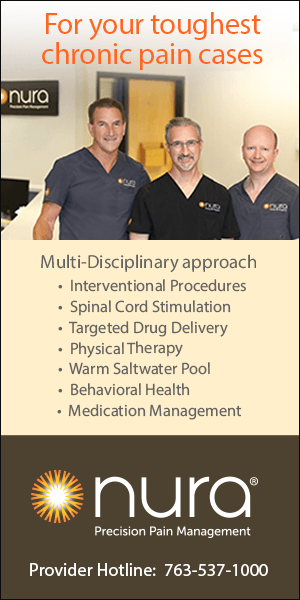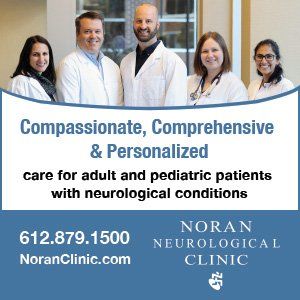ne, thing that most medical specialties have in common with one another is they each have their version of That Condition (TC). Regardless of what type of doctor you are, you know what we are talking about. TC is that niggling condition that patients and doctors usually define by symptoms, rather than by disease entity. The symptoms can be chronic or acute, constant or intermittent, stable or progressive, and although they are usually neither life- nor sight-threatening, they are often significant enough to affect patients’ daily activities and quality of life. TC is usually multifactorial with many internal and external influences. It is difficult to both diagnose accurately and treat completely, and for these reasons, patients tend to hop from doctor to doctor in search of a cure.
Ophthalmology
Dry Eye Disease
The “That Condition” of Eye Care
BY GARY S. SCHWARTZ, MD, MA, AND JACOB R. LANG, OD, FAAO
Almost every medical specialty will have their version of TC. For gastroenterologists, it is belly pain; for neurologists, it is headache; for dermatologists, it is itchiness; for gerontologists, it is dizziness; for many specialties, it is low back pain. In eye care, it is dry eye. As seen with other specialties’ versions of TC, dry eye is chronic, multifactorial, difficult to both diagnose properly, treat fully, and typically not life-threatening.
When we were in training twenty years ago (for JRL) and more (for GSS), research on Dry Eye Disease (DED) was scant. There were very few in-office tests at that time, and of those that were available, few were accurate, reproducible or frankly useful. Treatments were limited to over-the-counter lubricating eye drops, punctal occlusion, eye masks, room humidifiers and the advice to spend winter in a more humid area than Minnesota. Tropical areas, such as Hawaii and Florida, were recommended; the deserts and mountains of the American West were to be avoided. Despite our best efforts, the majority of patients did not see real improvement, and most continued to doctor-shop, hoping to find someone who could understand their problem enough to heal them.
Out of all this demand was born the DED specialty. Although the optometry schools and medical school departments of ophthalmology have had important roles in the development of this specialty, for-profit therapeutics and device companies have taken the lead in much of the progress. And they are smart to lead this effort because DED affects an estimated 30 million Americans. It is also one of those chronic conditions that that gets worse with age. As the population ages, more people suffer from DED, with each individual suffering more with each passing year. Here is a brief look at the developments in diagnosis and therapy over the last 25 years.
DED affects an estimated 30 million Americans.
Diagnosis
The first step in curing patients of a condition is gaining an understanding of it. For DED, this means understanding what normal tears look like and how they differ from abnormal ones. DED is typically caused by more than just a decrease in the volume of tears, and so the name of the specialty is an unfortunate misnomer. Tear Film Dysfunction would be a better name, but DED is easier to market and for patients to grasp; it is therefore here to stay.
In keeping with the early misunderstanding that all DED was caused by the eyes’ failure to make enough tears, most of the available tests from 20-30 years ago merely measured the volume of tears that a patient produced. The following analogy points out the problem with this system: managing a patient’s tear film problem by measuring only their tear volume is akin to managing a patient’s blood dyscrasia by measuring only their hematocrit. We eventually realized that tear volume was not always consistent with patients’ symptoms or examination findings. For example, many DED patients complain of watery eyes. Once we knew there had to be something else at play, it was only a matter of time before we figured out what that was.
If the problem cannot always be attributed to the quantity of tears, it must often be attributed to their quality. Researchers looked at what constituted normal tears and discovered a rich combination of water, salts, organic molecules, e.g., hormones and enzymes, mucin, lipid, cells, e.g., inflammatory, bacteria, and other materials. They then looked at the tears from patients who were diagnosed with DED and found that different patients had abnormal amounts of any or all of what is normally found. Based on these observations, different tests have been marketed in an effort to identify the source of any patient’s problem.
One type of in-office test looks at the concentration of materials that are dissolved in the tears, the tear osmolality. The thinking here is that having a higher concentration of solutes in the tears is an indication that there is not enough solvent (in this case, water). Developed in 2007, the TearLab® is an example of a desktop device that can measure a patient’s tear osmolality within just a few seconds. Knowing a patient’s osmolality was one of the first reproducible tests that allowed eye doctors to confidentially diagnose a patient with DED.
Other tests, such as LipiView®, look at the lipid component of tears. It not only images the lipid producing glands (Meibomian glands); it also measures the thickness of the tear’s lipid layer and how it varies from blink to blink. The understanding is that a layer of lipid on the anterior surface of the tear film acts like a tablespoon or two of olive oil on top of a boiling pot of pasta–it smooths and quiets the surface. The problem with the lipids we tend to develop as we age is not the amount we make, but a problem with viscosity. This problem goes hand in hand with what is seen with lipids in other parts of the body, and the Western diet probably contributes to this in addition to aging. More highly viscous lipids in tears have a consistency more similar to butter than olive oil and disrupt the surface of the tears instead of quieting it. Knowing how a patient’s lipids contribute to their DED is an important weapon in the Dry Eye specialist’s arsenal.
Another in-office test measures the inflammatory components dissolved in a patient’s tears. InflammaDry® is a small, disposable device that resembles an OTC urine pregnancy test or at-home COVID-19 test. By touching the tip of the device to a patient’s tear film, the Dry Eye specialist can determine whether a patient has an overabundance of inflammatory mediators, specifically MMP-9, contributing to their symptoms. If this is the case, the clinician will be more likely to tailor their treatment plan to include anti-inflammatory medications.
Treatment
As our ability to diagnosis DED has expanded, so has our ability to treat it. For patients with a decrease in the volume of their tears (aqueous deficiency), there are medicines and devices designed to increase that volume. Long-term medical therapies such as topical cyclosporine and lifitegrast eyedrops have been shown to increase tear volume by decreasing inflammation. Short-acting strategies that involve stimulating the nerve centers that control lacrimation include varenicline nasal spray (Tyrvaya™). Eyelid punctal occlusion can also increase the volume of tears on the surface of the eye by blocking the route of egress; choices here include dissolvable or permanent punctal plugs or permanent closure of the punctum by handheld cautery.
For each treatment, success will depend on a combination of factors.
Treatments have also been developed for those patients whose DED is primarily due to the lipid dysfunction of their tears. Oral omega-3 fatty acid supplements have been used to help patients make less viscous lipids, more similar to those they produced years or decades earlier. Devices such as LipiFlow® and Intense Pulsed Light treatments can help patients clean out those eyelid sebaceous glands that are clogged with abnormally viscous oils, allowing them to be replaced with newer, thinner, more olive oil-like secretions.
The birth of a new specialty
As has been seen historically in all fields of medicine, the development of more diagnostic and therapeutic opportunities have led to greater complexity and need for sub-specialization, and that is exactly what is happening with regard to DED. The typical eye doctor will see a handful of patients each day with some level of complaints related to DED. It may be a 70-year-old who comes in for a cataract check and says, “My eyes get tired at the end of the day while I’m reading.” Another could be a 52-year-old accountant who says, “I have difficulty seeing spreadsheets by mid-day because everything gets fuzzy.” Another could be a rheumatoid arthritis patient who says, “My eyes feel scratchy and irritated from when I wake up in the morning until I go to bed at night.” Each of these patients is probably experiencing DED, and as stated above, their problems are usually neither life- nor sight-threatening. For each treatment, success will depend on a combination of factors:
- The patient’s ability to explain the effect of their problem on their daily functioning.
- The time, money and energy they want to invest in treating the problem.
- The doctor’s level of expertise, interest, patience and time.
- Any other of a myriad of components.
Because most eye doctors do not have the appropriate combination of expertise, interest, patience and time to fully treat each patient’s DED, most patients go under- or untreated, accounting for the large amount of DED television commercials, magazine ads and doctor-jumping.
There is no formally recognized subspecialty of or fellowships in DED, nor is there a Dry Eye accreditation body or board. A significant number of optometrists and ophthalmologists are committed to gaining the expertise to focus on treating DED in their practices. In taking on this commitment, they are creating practice models that combine the necessary ingredients of experience, interest, patience and time to treat these patients who have this problem. For the Dry Eye specialist, treating That Condition presents an opportunity to help patients that others have failed. Once established, Dry Eye specialists can be found spreading the gospel on podia at conferences, as guests or hosts of podcasts or as authors of articles in both peer-reviewed journals and non-peer-reviewed magazines.
We are also seeing the birthplace of the Dry Eye clinic, either within established comprehensive eye clinics or as standalones. These clinics are staffed with providers and technicians who are skilled at diagnosing and managing all aspects of DED. Some patients find their own ways into these specialized clinics, and others are referred there by primary care or eye care providers who don’t have the requisite combination of expertise, interest, patience and time necessary to take care of these patients appropriately. At this stage, Dry Eye specialist and Dry Eye clinic are informal designations.
Summary
At some fundamental level, DED is That Condition of the eye care world. Fortunately, we practice at a time when the diagnostic and treatment options have developed to the point that the overwhelming majority of patients can be helped, if not cured. Treating these patients requires not only an understanding of what is available, but also an interest to do so. The Dry Eye specialist and Dry Eye clinic are two new developments in the arena of eye care that should help patients receive the care that is necessary to help them with this chronic, frustrating problem.
Gary S. Schwartz, MD, MHAD, is President, Associated Eye Care and Co-Chair and Executive Medical Director, Associated Eye Care Partners.
Jacob R. Lang, OD, FAAO, is Medical Director, Dry Eye Consultants and Lead Optometrist and Residency Director, Associated Eye Care.
MORE STORIES IN THIS ISSUE


















